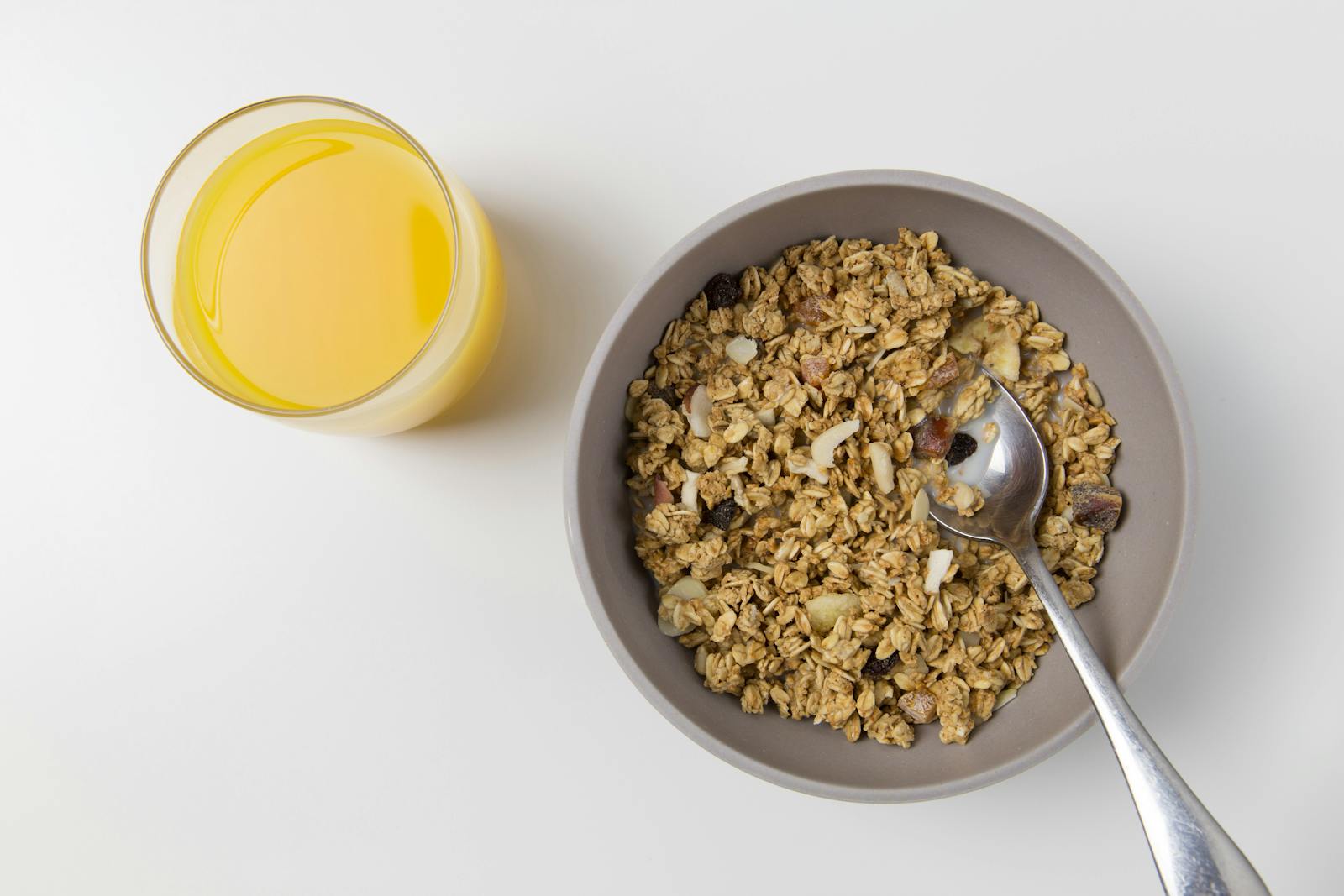Maintaining stable blood sugar levels is essential for everyone, but it is particularly important for individuals with diabetes, insulin resistance, or metabolic syndrome. The glycemic index (GI) is a system that ranks foods based on how they affect blood sugar levels. Foods with a low glycemic index cause a slower, more gradual rise in blood sugar, making them beneficial for managing diabetes, supporting weight control, and improving overall health.
In this article, we’ll explore 16 of the best foods with a low glycemic impact that help control blood sugar levels. These foods are rich in fiber, healthy fats, and essential nutrients that help slow down the digestion and absorption of sugars, preventing blood sugar spikes.
1. Oats: A Fiber-Packed, Low-Glycemic Grain
Oats are one of the best grains for blood sugar control due to their high soluble fiber content, specifically beta-glucan. Beta-glucan slows down the digestion of carbohydrates, leading to a gradual release of glucose into the bloodstream. This helps prevent blood sugar spikes and improves insulin sensitivity, making oats an excellent choice for individuals with type 2 diabetes.
Oats are also low on the glycemic index, with a GI score of around 55, depending on the type of oats. Steel-cut oats have a lower glycemic impact than instant oats, making them a better option for stable blood sugar levels. Including oats in your breakfast or snacks can provide lasting energy without causing sharp rises in blood sugar.
2. Sweet Potatoes: A Nutrient-Dense Alternative to Potatoes
Sweet potatoes are a low-glycemic alternative to regular potatoes and are packed with nutrients such as vitamin A, vitamin C, and fiber. Unlike regular white potatoes, which can cause blood sugar spikes, sweet potatoes have a glycemic index of 44, making them a better choice for maintaining stable blood sugar levels.
The fiber in sweet potatoes slows down the absorption of sugar into the bloodstream, helping regulate blood sugar levels after meals. Additionally, the antioxidants in sweet potatoes help reduce inflammation, which can improve insulin sensitivity and support overall blood sugar control.
3. Lentils: High in Protein and Fiber
Lentils are a powerhouse of nutrition, offering high amounts of fiber, protein, and complex carbohydrates. Their low glycemic index (around 32) makes them an excellent food for stabilizing blood sugar levels. The combination of protein and fiber in lentils slows down the digestion process, preventing sudden spikes in glucose.
Lentils also have the added benefit of supporting heart health by reducing cholesterol levels. Whether added to soups, stews, or salads, lentils are a versatile and filling food that can help keep blood sugar levels steady throughout the day.
4. Chickpeas: A Low-Glycemic Legume for Satiety
Chickpeas are another excellent legume with a low glycemic index of 28, making them ideal for blood sugar control. Rich in fiber and protein, chickpeas help stabilize blood sugar by slowing the digestion of carbohydrates. This makes them a great option for individuals with diabetes or those looking to improve their insulin sensitivity.
Chickpeas are also packed with essential vitamins and minerals, such as folate, iron, and magnesium, which support overall health. Whether used in hummus, salads, or stews, chickpeas provide a filling and nutritious option that supports long-term blood sugar regulation.
5. Barley: A Low-GI Grain for Blood Sugar Control
Barley is a fiber-rich grain with a glycemic index of 28, making it one of the best grains for blood sugar management. Its high content of beta-glucan helps slow down the absorption of glucose, preventing spikes in blood sugar levels after meals.
Barley is also rich in vitamins, minerals, and antioxidants, making it a nutritious addition to soups, stews, or salads. Including barley in your diet can help improve insulin sensitivity and support long-term blood sugar control.
6. Quinoa: A Complete Protein for Glycemic Control
Quinoa is a gluten-free grain that has a relatively low glycemic index of 53. What makes quinoa stand out is that it’s a complete protein, meaning it contains all nine essential amino acids. The combination of protein and fiber in quinoa slows down the digestion of carbohydrates, helping to stabilize blood sugar levels.
Quinoa is also rich in magnesium, which plays a role in regulating insulin sensitivity. Including quinoa in your diet can help improve blood sugar control and provide sustained energy throughout the day.
7. Nuts: Heart-Healthy Fats with Low Glycemic Impact
Nuts, such as almonds, walnuts, and pistachios, are rich in healthy fats, fiber, and protein, all of which help regulate blood sugar levels. The glycemic index of nuts is extremely low, meaning they have little to no impact on blood sugar when consumed in moderation.
The healthy fats in nuts also support heart health and reduce inflammation, both of which are important for people with diabetes. Adding a handful of nuts to your meals or snacks can provide lasting satiety and help prevent blood sugar spikes.
8. Berries: Low-Glycemic, Antioxidant-Rich Fruits
Berries, such as blueberries, strawberries, and raspberries, are among the best fruits for blood sugar control. These fruits have a low glycemic index (ranging from 25 to 40) and are rich in fiber, antioxidants, and vitamin C.
Berries have been shown to improve insulin sensitivity and reduce the body’s glucose response after meals. Their antioxidant content also helps combat oxidative stress and inflammation, which are common in individuals with diabetes. Enjoying a serving of berries with yogurt or adding them to smoothies can provide a sweet treat without causing blood sugar spikes.
9. Leafy Greens: Low-Glycemic Nutritional Powerhouses
Leafy greens, such as spinach, kale, and Swiss chard, are extremely low on the glycemic index and are packed with nutrients like vitamin K, magnesium, and antioxidants. These vegetables have a minimal impact on blood sugar levels and are beneficial for overall health, including blood sugar control.
Leafy greens are high in fiber, which helps slow down the absorption of glucose into the bloodstream. They also contain compounds that may improve insulin sensitivity. Including leafy greens in your salads, soups, or smoothies can help stabilize blood sugar and support long-term health.
10. Greek Yogurt: Low in Carbohydrates and High in Protein
Greek yogurt is an excellent source of protein and probiotics, with a low glycemic index, making it a great choice for controlling blood sugar. The high protein content in Greek yogurt helps slow the digestion of carbohydrates, which can prevent blood sugar spikes.
In addition to its blood sugar benefits, Greek yogurt contains probiotics, which support gut health. Some studies suggest that improving gut health can have a positive effect on glucose metabolism and insulin sensitivity. Choose unsweetened, plain Greek yogurt to avoid added sugars that can affect blood sugar levels.
11. Apples: A Fiber-Rich, Low-Glycemic Fruit
Apples are a popular fruit with a low glycemic index of 39, making them an excellent choice for blood sugar control. The fiber in apples, particularly pectin, helps slow down the absorption of sugar into the bloodstream, which stabilizes blood sugar levels after eating.
Apples are also rich in antioxidants, including quercetin, which has anti-inflammatory properties and may improve insulin sensitivity. Eating apples as a snack or adding them to salads and oatmeal can help provide sustained energy without causing blood sugar spikes.
12. Chia Seeds: High in Fiber and Omega-3s
Chia seeds are a nutritional powerhouse with a very low glycemic index, making them an excellent choice for stabilizing blood sugar levels. Chia seeds are rich in fiber, particularly soluble fiber, which helps slow the absorption of carbohydrates and prevents rapid rises in blood sugar.
In addition to fiber, chia seeds are a good source of omega-3 fatty acids, which have anti-inflammatory properties that support overall health. Adding chia seeds to smoothies, yogurt, or oatmeal can help improve blood sugar control and provide long-lasting satiety.
13. Carrots: Low-Glycemic, Nutrient-Dense Vegetables
Carrots have a low glycemic index of 39 when consumed raw, making them a great option for blood sugar control. Despite their natural sweetness, carrots do not cause sharp increases in blood sugar levels because their fiber content slows the absorption of sugars into the bloodstream.
Carrots are also rich in beta-carotene, a powerful antioxidant that supports immune function and eye health. Snacking on raw carrots or adding them to salads and stir-fries can help manage blood sugar levels while providing essential nutrients.
14. Pears: A Low-Glycemic Fruit for Sustained Energy
Pears have a glycemic index of around 38, making them one of the best fruits for controlling blood sugar levels. Like apples, pears are rich in fiber, which helps slow the release of glucose into the bloodstream and prevents blood sugar spikes.
Pears are also a good source of vitamin C and potassium, both of which support overall health. Including pears in your diet can help you satisfy your sweet tooth while keeping blood sugar levels stable.
15. Cinnamon: A Spice That Helps Regulate Blood Sugar
Cinnamon is not only a delicious spice but also a powerful natural remedy for blood sugar control. Research has shown that cinnamon can improve insulin sensitivity and lower fasting blood glucose levels in people with diabetes.
Cinnamon helps slow the breakdown of carbohydrates in the digestive system, reducing the post-meal glucose spike. Adding cinnamon to oatmeal, yogurt, or smoothies is an easy way to incorporate this spice into your diet and enjoy its blood sugar-regulating benefits.
16. Avocados: Rich in Healthy Fats for Glycemic Control
Avocados are low in carbohydrates and have a very low glycemic index, making them an ideal food for blood sugar control. Avocados are rich in monounsaturated fats, which improve insulin sensitivity and help stabilize blood sugar levels.
In addition to healthy fats, avocados provide fiber and a range of essential nutrients, including potassium and vitamin K. Including avocados in your diet can help reduce inflammation, improve heart health, and support long-term blood sugar control.
Conclusion
Maintaining stable blood sugar levels is crucial for managing diabetes, supporting weight control, and promoting overall health. By incorporating low-glycemic foods like oats, sweet potatoes, lentils, and berries into your diet, you can help regulate blood sugar levels, improve insulin sensitivity, and reduce the risk of long-term complications associated with elevated blood sugar.
These 16 best foods for blood sugar control are rich in fiber, healthy fats, protein, and antioxidants, all of which contribute to slowing down the digestion and absorption of carbohydrates. By making these foods a regular part of your meals, you can enjoy better blood sugar control, sustained energy, and improved overall health.




